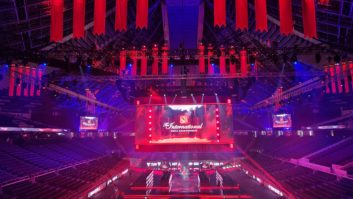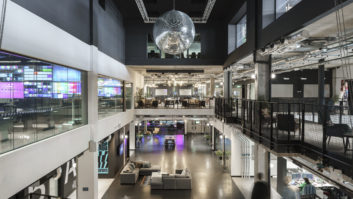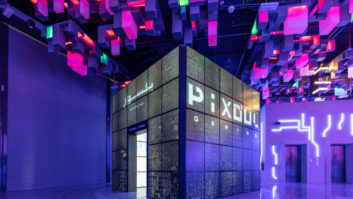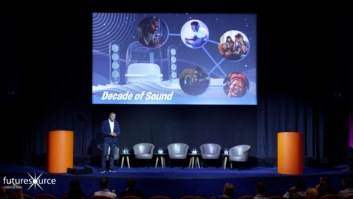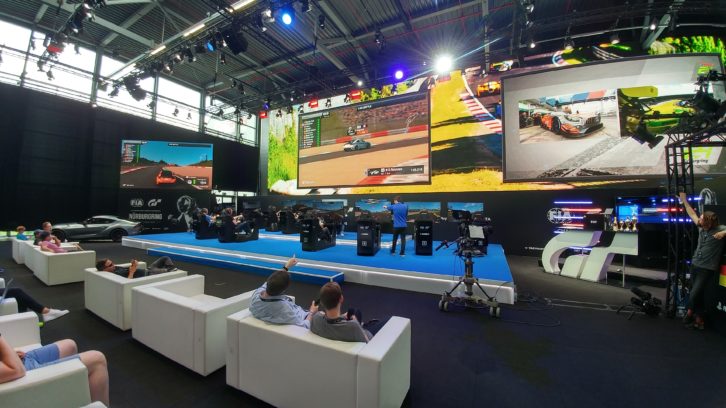
There can be no doubt – eSports is now very big business, and on a truly global level. By the late 2000s it was already on its way to becoming a global phenomenon, but one fuelled in large part by amateur initiatives and relatively low-key tournaments. Since then, video games developers and streaming companies – increasingly aware of the tremendous commercial potential of eSports tournaments, both at the host venues and online – have effected to turn it into a lucrative global business whose total annual revenues are thought to have passed the $1 billion mark in 2019.
As well as the obvious impact of a dramatic influx of cash, the other chief enabler of eSports has been the continued improvement in bandwidth availability in both venues and homes. But this is certain to remain a moving target as 4K, HDR and deepening interactivity and social media integration add further to network expectations in the coming years. As Joe Cumello, CMO of telecoms network supplier Ciena, recently remarked on the company’s website: “The result is a newfound fixation on your network connection, where an instant of ‘lagging’ can be the difference between your glorious victory or brutal defeat.”
Improving network speed and reliability will have to remain at the top of the priority list for eSports stakeholders if recent predictions prove to be accurate. For instance, Business Insider Intelligence recently estimated that total eSports viewership is on course to rise at 9% compound annual growth between 2019 and 2023 – soaring from an audience of 454 million to 646 million in a mere four years. Simultaneously, the number and variety of eSports events continues to grow, with stalwart franchises that have global appeal – including League of Legends, Counter-Strike and Overwatch – being joined by more events with a national or regional emphasis.
In historical terms, it could be that we are still only in the early chapters of what could prove to be a very long book. Vern Freedlander heads strategic partnerships at Bannister Lake, whose Chameleon data aggregation and management product has found favour in the data-intensive world of eSports. “I think the market still has a lot of potential,” he says. “Based on the demographics and the [increasing] acceptance of eSports I am sure that it will continue to grow. We are also seeing more conventional broadcasters embracing eSports as something they want to put on air, as well as more sponsors getting involved. Those factors will help fuel the growth of the industry.”
These sentiments are echoed by Liam Hayter, senior solutions architect at NewTek, whose NDI media-over-IP technology has resonated strongly with the eSports market. “ESports is one of the fastest, continually growing markets in the world right now,” he observes. “In Europe, this is no exception. Given the scale of audience reach and range of content being created at all levels, we don’t see this changing anytime soon.”
‘Inside the venue’
The diversity in size, scale and style of eSports events can make generalisations problematic, but we’re on fairly safe ground if we separate activities into two main categories: ‘inside the venue’ and ‘beyond the venue’. Inside the venue – frequently now an arena or stadium as the appeal of eSports, particularly around tournament finals, has grown – the specification is frequently comparable to a major concert, with a high-spec audio system (typically involving a line array and the latest digital mixers) required alongside impactful lighting and colossal video screens.
“With eSports events becoming a massive attraction, live events are being held in huge stadiums and live streamed to the masses, similarly to football matches or any other live sports event”
Chris Goff, BenQ
Needless to say, these screens need to be accurately synchronised and subject to a network latency that is as close to zero as possible. Content-wise they should ideally reflect the full scope of action being experienced by the gamers on their own (much smaller) screens.
Chris Goff is education & pro AV business manager at BenQ, which initiated a dedicated range of professional monitors and accessories for eSports, ZOWIE, in 2015. “With eSports events becoming a massive attraction, live events are being held in huge stadiums and live streamed to the masses, similarly to football matches or any other live sports event,” he says. “The difference, however, is how to ensure the tournaments played on [participants’] 28in monitors are seen. This is where pro AV really makes a difference. Events rely on massive repeater screens showing all the action, delivered via videowall or large venue projection, such as BenQ’s Bluecore laser projectors, for massive sharp images of all the action.”
Modern large venues can have permanent high-end AV systems as part of their inventories – something that is sure to become more common as music touring, in particular, seeks to cut overheads and reduce its carbon footprint by travelling more lightly. But the tendency, at least for now, is for “nearly all [the AV needed] for an eSports tournament to be brought in specifically for each event”, as the production will have been designed in a similar way to a big production music spectacular “where you have the purpose-built stage, and then the screens attached to that stage,” says Peter Kirkup, global technical solutions manager at disguise, which has just released the latest, r17 version of its software for creating live visual experiences.
All this means that the opportunities available to AV vendors and integrators are of a similar scale to those encountered in any other type of large-scale entertainment event. While a number of existing venues have become closely associated with eSports – The Copper Box, located in London’s Olympic Park – being one prominent example – the prospect of more dedicated eSports venues is sure to add to the pool of potential work. A 2019 Forbes article, entitled ‘eSports stadiums are popping up everywhere’, highlighted the range of new developments in the US alone – running the gamut from an 80-seat hall at Ohio State University, supporting its programme of eSports degrees, to the 65,000sqft Fusion Arena in Philadelphia that will host games for Overwatch League team Philadelphia Fusion from its projected opening in 2021.
As eSports becomes an increasingly serious business, it’s hardly surprising that other types of auxiliary facilities are starting to emerge. Training is an obvious area of activity, as reinforced by the recent opening by US eSports organisation Complexity Gaming in Frisco, Texas of a GameStop Performance Center. A venue where players can “gain insight and strategy from top eSports professionals, and learn to compete at higher levels,” the centre is also home to Complexity Gaming’s teams. It was the subject of an elaborate AV fit-out by integrator Audience Inc, involving a variety of 4K videowall configurations and display sizes, with RGB Spectrum’s Galileo videowall processors central to the specification.
To put it mildly, then, it’s a market to which AV manufacturers and installers should be paying very close attention from now on.
www.bannisterlake.com
www.benq.com
www.ciena.com
www.disguise.one
www.newtek.com
